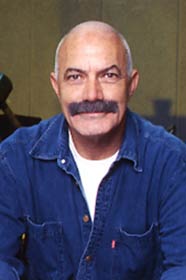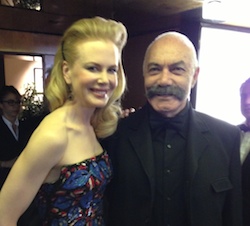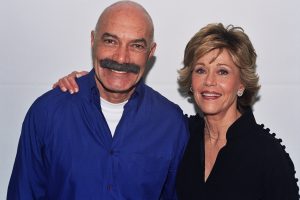Two-time Oscar winner Hilary Swank takes on the role of Erin Gruwell.
“True stories resonate with me,” says Swank, who won her first Oscar for her portrayal of Brandon Teena in the true-life story “Boys Don't Cry.” I was inspired by the screenplay and moved by its humanity. I felt in my heart and soul that I needed to be a part of telling this story. When I found out that I was Erin's first choice to bring her story to the screen, I thought it would be an honor to do so.”
“I poured out my heart in an e-mail to Erin,” Swank continues. “After I read the script, I wanted to meet her, talk to her, and tell her how important I thought her story was.”
Teaching as Noble Profession
“I felt that in some way teaching was the most noble thing that I could do in our own country, working with kids who oftentimes don't have the best teachers, supplies or the best schools,” says Gruwell. “I really wanted a school that had diversity, that had been affected by the riots and could be this wonderful eclectic mix of races and economics and cultures. On paper, Wilson seemed to be perfect because it was this fusion of affluent kids and abject poverty, and included every ethnicity under the sun with kids who could be headed off to Harvard or off to jail.”
After a tragedy shook the student body, Gruwell searched for a way to address the issues in her students' lives. Assigning them The Diary of Anne Frank, she found that many students were able to identify with Anne's challenges growing up in a warzone.
Keeping a Journal
It was Gruwell's next assignment that would profoundly change her students' lives: she asked them to keep a journal, recording their experiences, their emotions, their challenges, and their triumphs.
“The kids learned to pick up a pen instead of a gun, and the act of writing saved them,” explains director Richard LaGravenese. “Erin asked them to write about their wars and battles and it opened the gates for them to share their lives, which no one had ever asked them to do before. Through Anne Frank, she opened their eyes to a thirteen-year-old girl going through a war of her own and how writing helped her cope with her situation, and then, Erin showed them how to apply that to their own lives.”
The film is produced by Stacey Sher, Michael Shamberg, and Danny DeVito, who previously produced “Erin Brockovich,” an Oscar nominee for Best Picture. “One of the things that drew us to making this film was the notion that one person really can make a difference,” explains producer Stacey Sher. “Erin Gruwell is a hero like anybody else can be a hero. She was frightened but saw that something had to be done and couldn't turn her back on these kids. She empowered them with the tools to essentially help themselves.”
Wilson High School
In post-Rodney King riots Long Beach, Wilson High School seemed like a perfect stage to test the legitimacy and ideals of integration. Located in a predominantly wealthy area, the kids assigned to Room 203 were generally classified as the “unteachables”: an assortment of untouchables who faced a variety of challenges that included being under-privileged and under-educated, a history of criminal activity and/or drug dependency, family members and parents incarcerated, and heavy involvement in gang life. An aspiring teacher and do-gooder, Erin Gruwell chose Wilson High School in hopes of making a difference.
Instead of finding a program based on fairness and equal opportunity, what she found was an atmosphere dominated by racial tension, gang culture, intolerance and hopelessness. Self-segregation seemed to dominate the kids' social behavior as a means of survival; upon first stepping into her classroom, they immediately established the division by using their desks to create boundaries between them.
In the film, when the kids first come into Room 203, they transform the room into territories by turning their desks into each others groups and away from Erin,” explains LaGravenese, who wrote and directed the screenplay, based on the book by Gruwell and the Freedom Writers. “Turning their desks was an act of defiance and an act of unity within their own group.”
“When these kids came to school they imposed segregation on themselves,” recalls Gruwell. “They created territories based on race, gang affiliation, which side of the street they lived on, or which bus they'd taken. It was a daunting thing to look onto this group of students and see how they had self-imposed that separation onto themselves.”
Blatant Act of Racism
Forced to deal with the realities and challenges of this atmosphere, Erin knew that she would have to approach teaching these kids in a more unconventional manner. After intercepting a racially charged drawing in class (depicting one of the African-American students with exaggerated lips and nose), Erin lost her composure for the first time and exploded in front of her students.
Outraged by this blatant act of racism, Erin recognized the similarities between this image and one used to depict Jews during the Holocaust and explained the parallels between images like this and the tools used to infuse hatred toward Jews in the Holocaust. When she realized that few of her students knew anything at all about the Holocaust, she determined for the first time that she would have to look for a new way to reach them.
“When I made the parallel between this note and propaganda from the Holocaust, I got blank stares from my students. I remember trying to draw these parallels between pain and discrimination, but these terms were not something they understood,” explains Gruwell. “Even though all my students had experienced discrimination themselves, they didn't understand it when put into words. I started yelling and screaming and for the first time my faade cracked. I was no longer perky, I was no longer this cheerleader. In that moment of seeing me so passionate and so angry, the students kind of sat up and thought, wow, she's really serious.”
She asked how many of the kids in the class had been shot at; shockingly, all of her students raised their hands. After seeing this shared commonality between each other, the boundaries that separated them began to fall away.
Introducing the Holocaust
“After they raised their hands they started to compare their war wounds of gun shots and stab wounds, she noticed that the racial groups were talking to each other for the first time, sharing these war stories,” explains LaGravenese. “For a moment there was silence and a new respect, because nobody in her position had ever asked them that before. There was a break in the ice and she saw the possibility of becoming a group, and saw the effect that talking about the struggles of the victims of the Holocaust had. This moment gave her the idea to introduce “The Diary of Anne Frank” and other materials dealing with intolerance and the struggles of other young people.”
Desperate to continue the forward momentum created from that moment, Erin began using unexpected materials to engage her students that ranged from reading other wartime texts–Elie Weisel's Night to rap lyrics by Tupac Shakur. “I made a conscious choice not to water down the curriculum and baby-sit them. I wanted them to find relevance in everything that was on my syllabus, whether it was a sonnet or a book like The Odyssey,” recalls Gruwell. “I wanted to make education come to life, to make the words leap off the page.”
“They initially didn't understand why they should care about a Shakespearean sonnet or Homer's Odyssey when they would rather get a record contract from Dr. Dre,” continues Gruwell. “I wanted my students to realize that each and everyone of them had an odyssey of their own, their own kind of journey, and so I wanted to make every single lesson relevant to what they already knew, and to create some kind of bridge to validate who they were and where they came from. I was hoping to bring them across that bridge and teach them that education is a great liberating force and will equalize the playing field. Being educated didn't mean that they had to disregard who they are and where they came from, but it was important for them to understand that there was a whole world out there.”
After hearing her students' shared stories of survival, Erin had the idea to help the kids empower themselves with the use of the written word. Distributing blank journals, Gruwell gave them their assignment: to express themselves on the page, regardless of whether it was a drawing, a poem, or a diary entry. The results were astounding: for the first time in their lives, the kids of Room 203 saw themselves and their relevance within the world at large–and in return, knew that someone was listening to what they had to say.
“I find it so amazing that Erin could see the parallel between Anne Frank and these kids,” says Swank, who plays Gruwell and serves as executive producer of the film. “Anne Frank was trapped and judged because of her religion. When Erin saw that they could relate to that, she thought that maybe this could help spark their interest to read a book and begin to write themselves. Although writing in their journals wasn't necessarily a book report, they were writing. In the end that's what mattered.”
“The kids learned to pick up a pen instead of a gun, and the act of writing saved them,” explains LaGravenese. “They saw a thirteen-year-old girl suffering through a war of her own and how writing helped her cope with her situation. Erin asked them to write about their wars and battles–it opened the gates for them to share their lives, which no one had ever asked them to do before.”
This unlikely group of diverse “unteachables” that at first couldn't stand to be in the same together room became an extended family that provided a safe haven, support system, and renewed sense of self. This family, initially thrown together for their shared lack of hope and promise, now proudly referred to themselves as “The Freedom Writers.”










